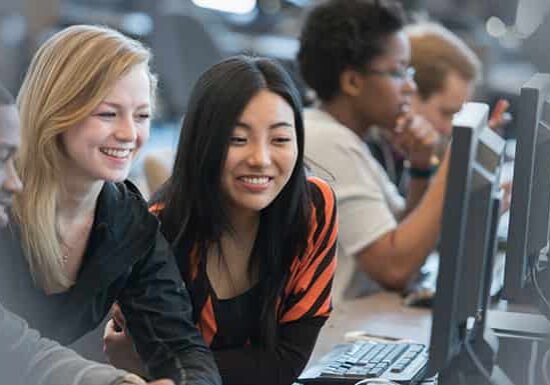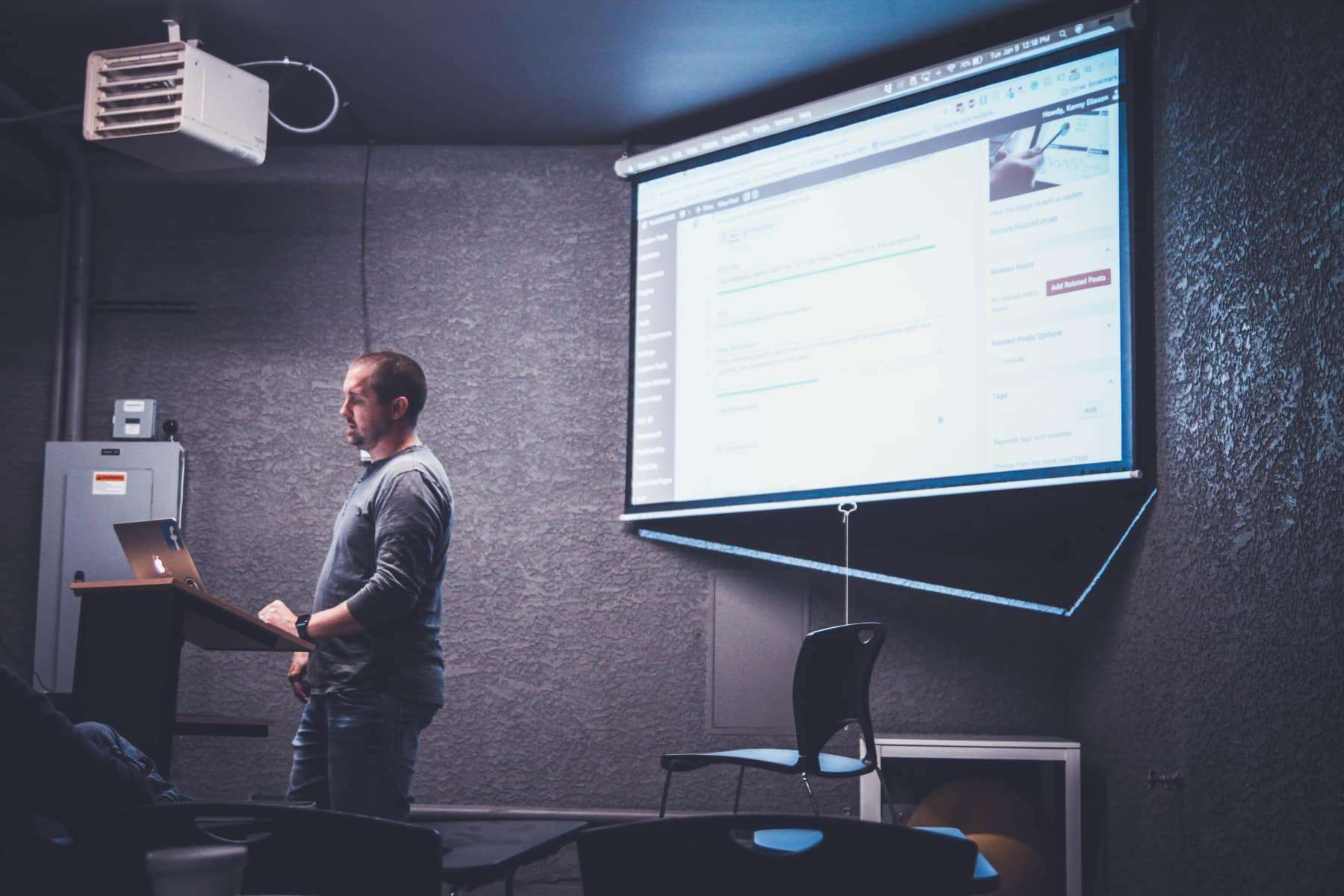Benefits of Technology in the Classroom
Updated: June 19, 2024
Published: May 6, 2019

Using technology in the classroom will better prepare students for the future as well as engage them in the present learning environment.
It goes without saying that technology is impacting all aspects of everyday life. And as time progresses, technological advances occur more rapidly as each iteration and innovation lays the groundwork to develop more powerful tools. When it comes to education, technology in the classroom has undergone exceptional changes. These changes have allowed learning to become more democratized, individualized and interactive.
The benefits of technology in the classroom are many, and by looking at history and the progression, we can see how much has changed in such little time. We can also see the various ways in which technology in education can benefit both students and teachers.
A Look Back
We’ve come a long way since the first form of projectors called The Magic Lantern in 1870. Even before personal computers entered the scene, the introduction of the chalkboard in 1890 and the photocopier in 1959 were pivotal milestones. Other technological advances like the calculator and Scantron system for tests (both in 1972) had obvious effects for education.
But the real impact was felt when everyday computers became commonplace. In the 1980s, technology’s effect on education was dramatic. From Toshiba to Apple, personal computers and widespread access to internet truly changed everything.
In 2009, 97% of classrooms had at least one computer. Computers offered a new and easy way for students to search for information, connect with one another, and of course, nowadays more than ever, publish their own content. Moving into the present day, the cost of hardware, software and the internet gradually lowered and so accessibility spread.
Education Moves Online
Technology both supports education within a classroom and physically becomes a way to access education even without a classroom. Pioneering the internet revolution of education, online universities like University of the People began to spread.
In 2009, University of the People was founded with the mission to offer online, accessible and affordable education to anyone, anywhere in the world with nothing more than an internet connection. The ability to offer courses worldwide means that geography, politics and money have little to no say in whether or not one is able to earn their education.
At University of the People, students have the opportunity to earn their degrees in Business Administration, Health Sciences, Computer Science and Education by taking courses online only. With students from over 200 countries and territories, the internet is connecting people from all over the world and allowing for the easy transfer of information and perspectives to be shared.

Source: Unsplash
Technology in the Classroom
It’s not only online education that has changed the way people access information. Within the classroom walls, technology like computers, tablets, projectors, augmented reality, and more have many positive effects on teaching and learning styles.
Let’s take a look at a few ways that technology helps both teachers and students in school:
1. Teach First to Engage Learners
There’s a famous saying, “Technology can be a wonderful tool or a terrible master.” When it comes to school, it’s important for teachers to still lead the lessons and explain ideas first before unleashing technology into the mix. Technology is not intended to replace a teacher’s role, but rather is there to help augment and support the learning.
Teachers can use technology like tablets and laptops to engage students once they’ve taught the gist of a lesson. By integrating technology to supplement a lesson, teachers are promoting student interaction and enhancing the ways by which students can recall information.
2. Interactive Technology, Broadening Horizons
Technology allows for broadened horizons and removes geographical barriers. Through the use of video conferencing tools like Skype and Google Hangouts, lecturers and educators around the world can come together behind their screens to share information, lectures and interactive lessons.
For example, if you have a public speaker that you want to be a guest speaker for your classroom, you can video conference them in. A helpful hint would be to make sure you have students draft any questions beforehand. Then, the said speaker and students can share a productive back and forth and make the most of their time together.
The way in which the internet allows for the transfer of information and conversation globally is what powers schools like University of the People. Because geographical barriers are eliminated, there is no constraint as to what can be accomplished and who can be involved.

Source: Unsplash
3. Incorporates Learning Styles
Different students learn differently. For example, some people prefer to learn visually while others are auditory learners. Depending on what a student prefers, technology can help to support their needs. Some students will learn better with presentations and video lessons and others may want to use recordings and headphones.
What’s more is that technology is advancing so quickly that one day, classrooms and teachers will be able to tailor lessons to students individually by gauging physiological and psychological feedback.
Innovations like biometrics, which is technology that can respond to a person’s behavior, will be able to recognize the disposition of students in a classroom. Then, based on that data, lesson plans can be tailored to each student’s individual needs to provide the content in the way that they will be most receptive.
4. Facilitates a Better Student/Teacher Connection
Teachers and students don’t spend all day and night together. However, technology bridges the gap and establishes a stronger connection between students and teachers because teachers can stay on top of culturally relevant content and use it in their lessons to better connect with students.
Teachers are able to open the doors of communication with students by using the content they are naturally engaged with to teach important lessons. Furthermore, the ability to send emails and messages outside of the classroom allows for communication even when class is out of session.
And, it’s not only the teacher/student connection that strengthens because of technology’s support of constant communication. Peer-to-peer interaction is also stronger and made to be more convenient with social media, text messaging, and online forums for discussions to take place outside of classroom walls.
5. Prepares for Workplace
Technology is everywhere. From classrooms to workplaces, students need to know how to leverage technology to produce work more efficiently. That’s why using technology in a classroom from a young age can benefit students for when they enter the workplace. Teachers can create projects where students get to utilize technology to learn and also convey their ideas to their classmates.
A simple example would be to assign students to create a presentation on the computer, or to use editing software to produce a short film on a relevant topic of study. This is preparation for the real world because every industry relies on technology.
It’s Just the Beginning
From minor changes to big innovations, technology in the world and in the classroom continues to shape how we learn, communicate and interact with one another. Technology advances so rapidly and so the advent of augmented reality, artificial intelligence, biometric data and more will continue to play a role in how classrooms are designed and how teachers and students interact.
In each industry, technology continues to use big data to make everything more personalized, and in education, this will be no different. Despite the growing number of students and high demand for teachers, technology will help bridge the gap to provide accessibility and tailored learning for students around the world.
